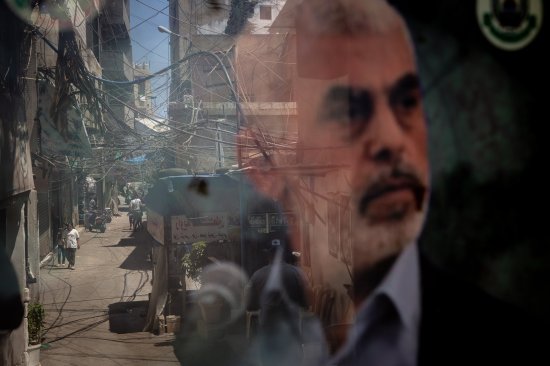
The architect of the worst terrorist attack in Israel’s history was killed after a year of apocalyptic war
The corpse of Yahya Sinwar was found in the landscape he envisioned—the dusty rubble of an apocalyptic war ignited by the sneak attack he had planned in secret for years, and launched on Oct. 7, 2023. The catch was that the fighting extended only 25 miles east and at most four miles south from the shattered villa in southern Gaza where the Hamas leader died one year and nine days later. “The big project,” as Hamas called Sinwar’s plan, had not engulfed the whole of the Middle East as hoped, nor brought about the collapse of Israel. Ground zero for the apocalypse remains the Gaza Strip, the Palestinian enclave Sinwar governed when he unleashed the attack that led to its destruction.
[time-brightcove not-tgx=”true”]Terror aims to provoke an over-reaction. If the first phase of Oct. 7—breaching the fence erected by Israel and overrunning its military bases—was an audacious military operation, the assault on the civilian settlements beyond was something else. During his 22 years in Israeli prison, Sinwar was an avid student not only of Hebrew but also of Jewish history, including pogroms. His 2011 release brought another lesson: Sinwar, known at the time as the “Butcher of Khan Yunis” for his brutality in dispatching suspected informers, returned to Gaza among more than 1,000 Palestinian prisoners that Israel traded for the freedom of a single Jewish soldier. As Israeli hostage negotiator David Meidan has observed: “The matter of captives is our soft underbelly.”

Sinwar’s death may open the door to a cease-fire that frees the dozens of Israeli hostages who remain in Gaza. Prime Minister Benjamin Netanyahu, having resisted a deal while the architect of the worst terrorist attack in the nation’s history remained at large, was described in reports as more open to one in a call with President Joe Biden on Thursday. What has moved beyond imagination is negotiations of any other kind.
Read More: The Families of Hostages On Life After Oct. 7.
By Sinwar’s grim math of mass murder, the primary calculation is body counts. The Palestinian question is back on the world agenda, and Israel’s global reputation, already suffering with its half-century occupation of Palestinian territories, is deeply stained. Most polls over the last year have shown Palestinians more inclined to embrace the militancy of Hamas, an Arabic acronym for Islamic Resistance Movement. But those things matter most in the realm of negotiated peace that Hamas rejects: Camp David and Oslo were the prism through which the world viewed the Israeli-Palestinian conflict. Oct. 7 shattered it.

In the ruins of Gaza, however, where 1.9 million people have fled their homes and the risk of famine grows, support for the Oct. 7 attack shows signs of slipping. Confronting Israel on military terms allows Israel to frame the Palestinian question as a question not of national aspiration, or of justice, but as a question of security. And, especially with the $17.9 billion in U.S. military aid this year, security is Israel’s strong suit. Caught flat footed by Sinwar’s assault, it has since moved methodically against the forces Hamas had hoped would come to its aid—Hezbollah in Lebanon, the Houthis in Yemen, and their common sponsor, Iran. This month Israeli columns were also heading back to Gaza’s north, shutting down food aid and warning residents to evacuate or be regarded as targets.
Read More: Exclusive: Netanyahu At War.
By the count of the Hamas government he led, Sinwar, 61, was preceded in death by 42,438 of his constituents, more than half of them women and children. The whereabouts of his own family was unknown, but thought to appear briefly in surveillance footage recovered earlier this year from an underground redoubt Israeli forces said was located beneath a cemetery. In it, Sinwar moves single file into a tunnel, behind a girl clutching a doll and a boy using a flip phone as a flashlight.
